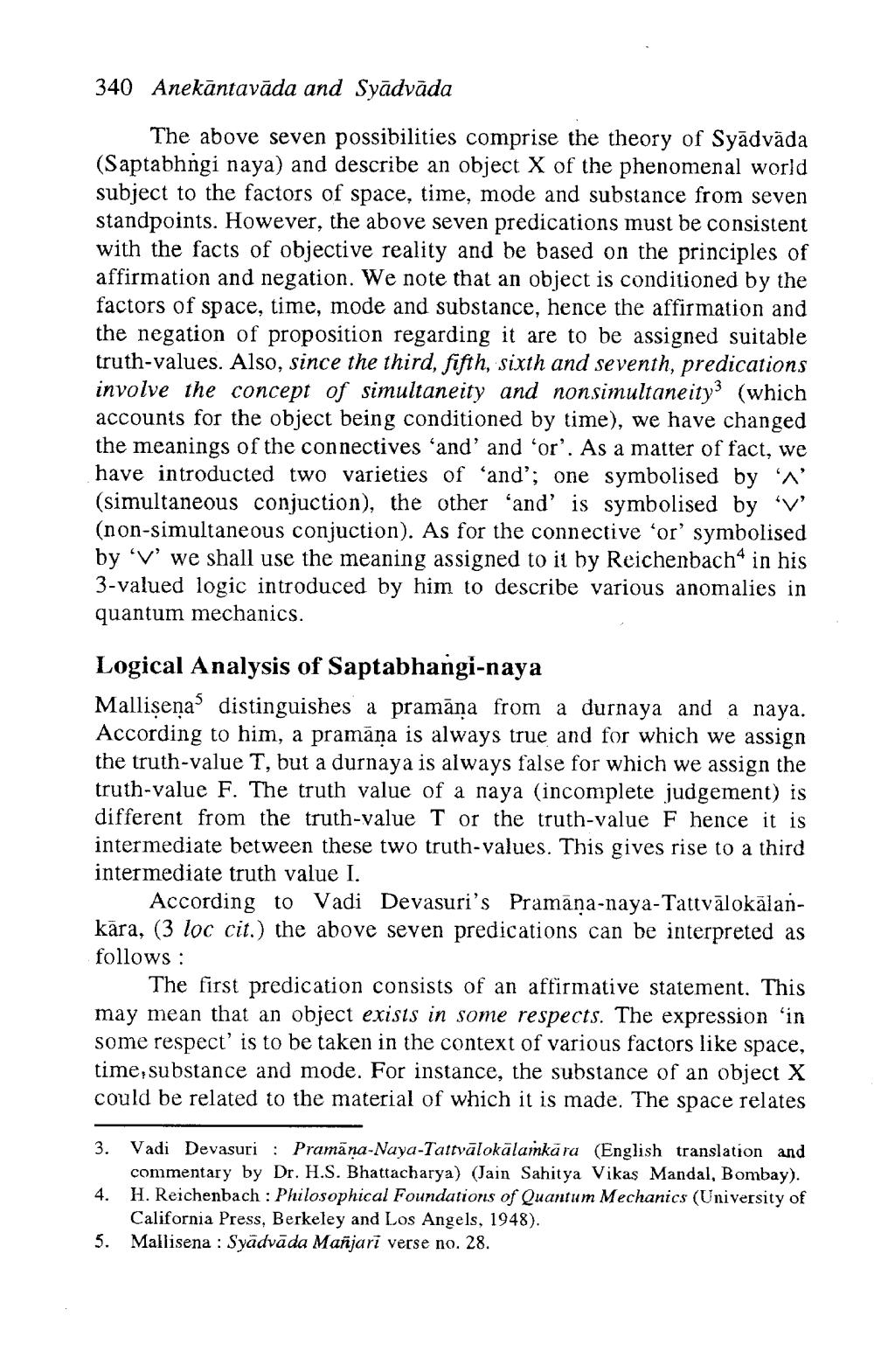________________
340 Anekāntavāda and Syādvāda
The above seven possibilities comprise the theory of Syādvāda (Saptabhngi naya) and describe an object X of the phenomenal world subject to the factors of space, time, mode and substance from seven standpoints. However, the above seven predications must be consistent with the facts of objective reality and be based on the principles of affirmation and negation. We note that an object is conditioned by the factors of space, time, mode and substance, hence the affirmation and the negation of proposition regarding it are to be assigned suitable truth-values. Also, since the third, fifth, sixth and seventh, predications involve the concept of simultaneity and nonsimultaneitys (which
ccounts for the object being conditioned by time), we have changed the meanings of the connectives 'and' and 'or'. As a matter of fact, we have introducted two varieties of ‘and'; one symbolised by ' (simultaneous conjuction), the other ‘and' is symbolised by v (non-simultaneous conjuction). As for the connective ‘or' symbolised by 'V' we shall use the meaning assigned to it by Reichenbacho in his 3-valued logic introduced by him to describe various anomalies in quantum mechanics.
Logical Analysis of Saptabhangi-naya Mallişenas distinguishes a pramāņa from a durnaya and a naya. According to him, a pramāna is always true and for which we assign the truth-value T, but a durnaya is always false for which we assign the truth-value F. The truth value of a naya (incomplete judgement) is different from the truth-value T or the truth-value F hence it is intermediate between these two truth-values. This gives rise to a third intermediate truth value I.
According to Vadi Devasuri's Pramāna-naya-Tattvālokālankāra, (3 loc cit.) the above seven predications can be interpreted as follows:
The first predication consists of an affirmative statement. This may mean that an object exists in some respects. The expression 'in some respect' is to be taken in the context of various factors like space, time, substance and mode. For instance, the substance of an object X
ald be related to the material of which it is made. The space relates
3. Vadi Devasuri : Pramāna-Naya-Tattvālokālamkāra (English translation and
commentary by Dr. H.S. Bhattacharya) (Jain Sahitya Vikas Mandal, Bombay). 4. H. Reichenbach : Philosophical Foundations of Quantum Mechanics (University of
California Press, Berkeley and Los Angels, 1948). 5. Mallisena : Syadvāda Manjari verse no. 28.




